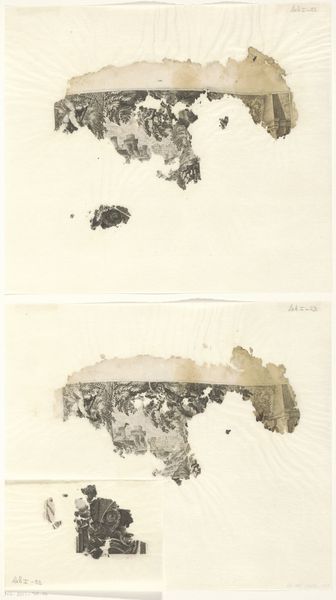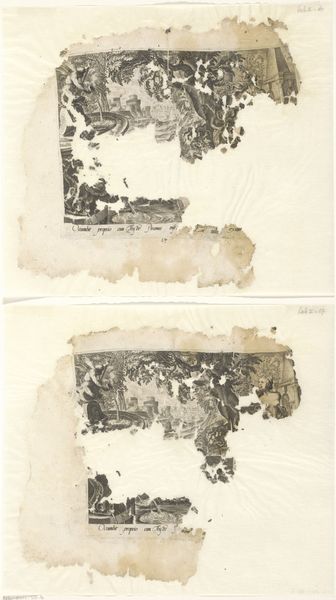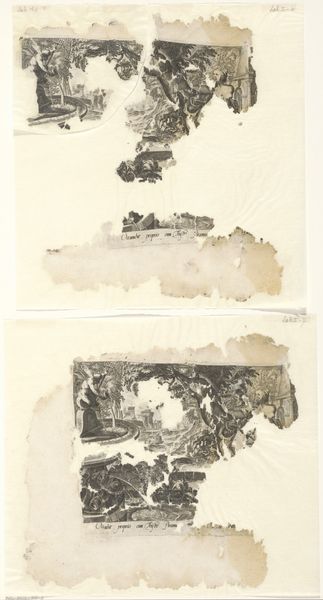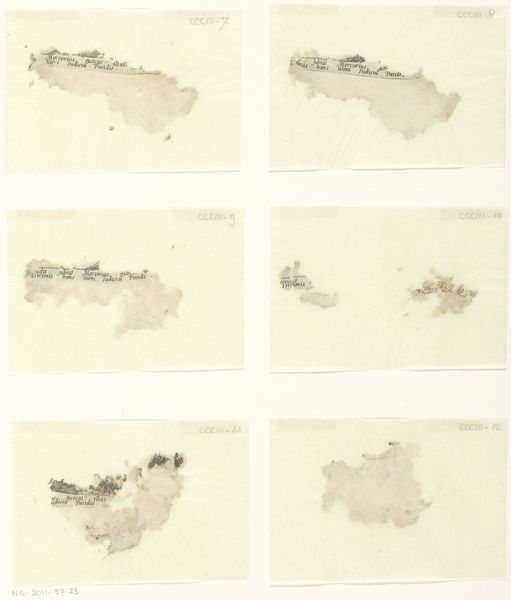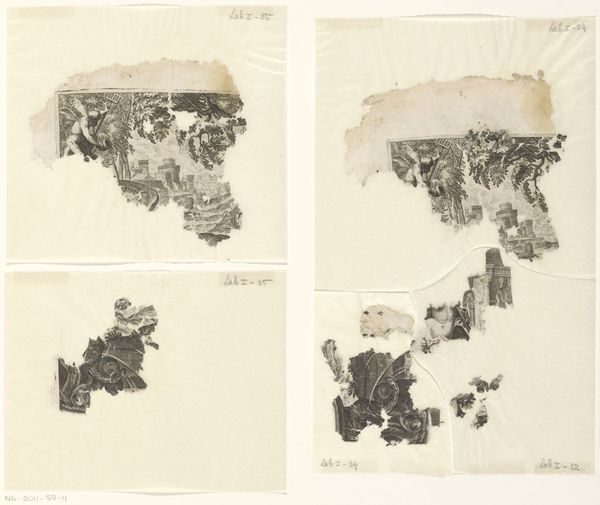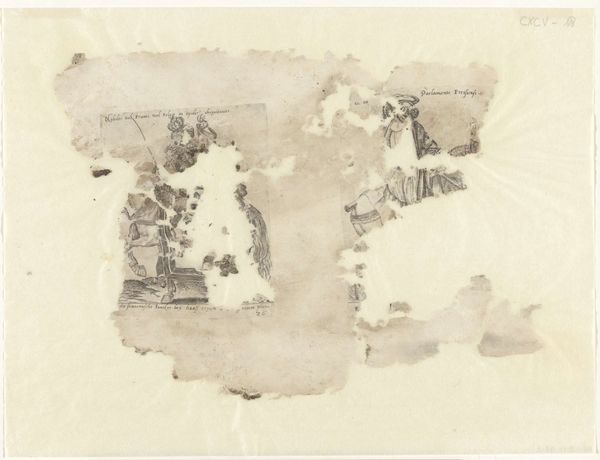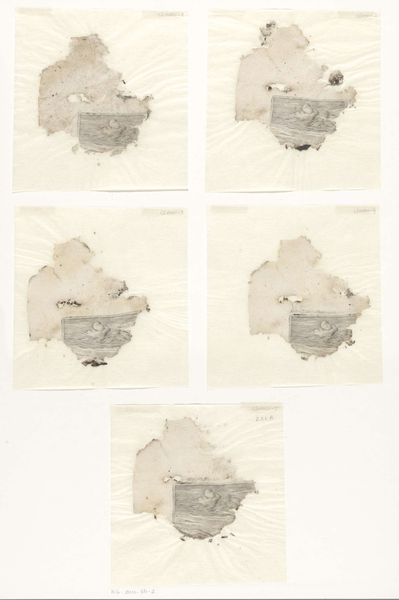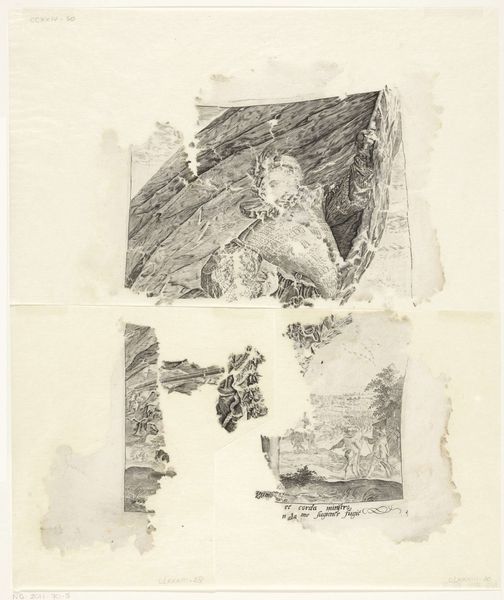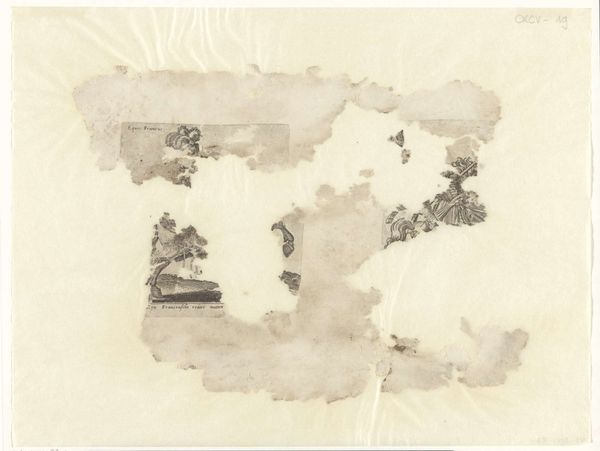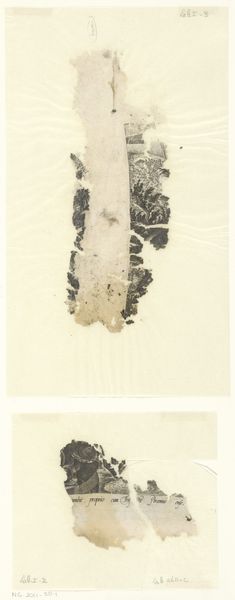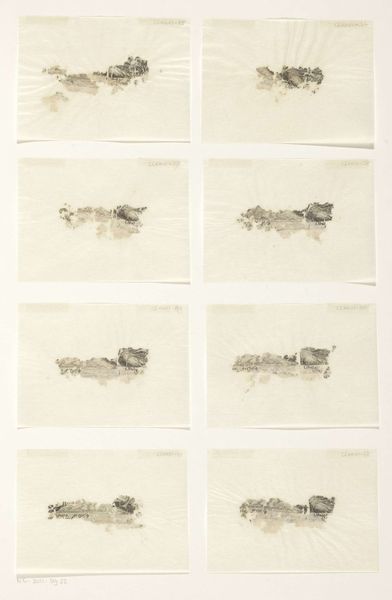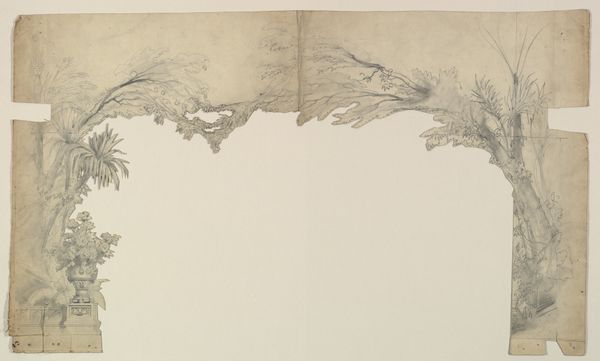
print, paper, pencil, engraving
# print
#
pencil sketch
#
figuration
#
paper
#
pencil
#
history-painting
#
northern-renaissance
#
engraving
Dimensions: height 208 mm, width 259 mm, height 184 mm, width 264 mm
Copyright: Rijks Museum: Open Domain
Editor: Here we have "Fragmenten van prenten van Pyramus en Thisbe," fragments of prints depicting Pyramus and Thisbe, dating back to 1580-1596. They’re located at the Rijksmuseum, created by an anonymous artist, using pencil and engraving on paper. Visually, it's so fragmented, like shattered memories. How would you approach an interpretation of these incomplete images? Curator: Given its fragmented nature, our focus shifts to the relationship between the depicted space and the negative space created by the damage. Observe the lines etched by the engraving, even in their broken form; they dictate the remaining composition. What do these lines still communicate to us, beyond the obvious loss? Editor: I see figures, architecture... the remnants of a narrative scene. Are you suggesting the damage itself becomes part of the artistic statement? Curator: Precisely. Consider the texture of the paper where it is torn, versus the deliberate lines of the engraving. The contrast emphasizes the materiality of the work. The absent parts force our eyes to complete the picture, engaging actively with what is there, and is not there. Is that lack somehow important, or suggestive of other readings? Editor: That’s an interesting perspective! The absence makes you think about what’s missing and why. Is there anything we know of the artist? The metadata suggests they are "anonymous". How does that change our perspective? Curator: The absence of the artist's intentionality directs our focus back onto the piece itself and our interaction with it. Stripped of provenance, we engage with its purely formal qualities – line, texture, composition, and the very real gaps in its narrative, both literally and figuratively. It also encourages thoughts about loss and fragility in history and the nature of narrative itself. Editor: I hadn’t thought about absence playing such an active role in interpreting a piece. It’s fascinating how the damage contributes to the art’s meaning, rather than detracting from it. Curator: Indeed. The interplay between what remains and what's lost reframes the work.
Comments
No comments
Be the first to comment and join the conversation on the ultimate creative platform.
